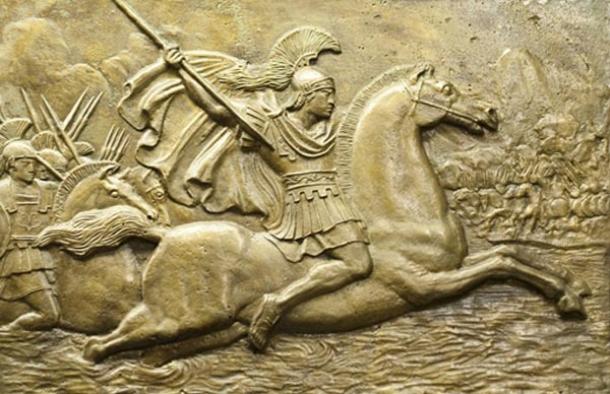
Like millions of others I have been enthralled by the mystery of the Great Pyramid in Egypt. So when I read that in the 9th century a certain Caliph Al Ma’mun had literally smashed his way into it, well my curiosity got the better of me and I decided to investigate. I found that the renowned caliph was not alone, apart from the labourers required to dig out the tunnels he had also taken a huge team of highly educated scholars, but why? Surely a man only interested in hidden treasure would not have required such a level of expertise. Goodness! Just imagine the expense he had to go to in employing these experts and at a time when he was busy defending the borders of his caliphate.
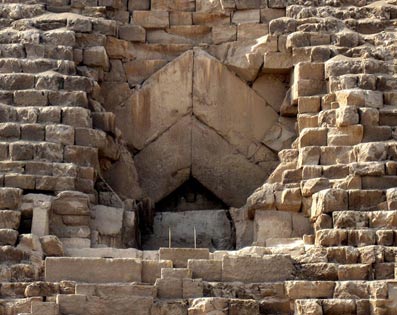
The tunnel made by Caliph Al Ma’mun in the Great Pyramid (Wikipedia)
The Great Pyramid had been sealed for thousands of years so how did the caliph know there was something of great value inside? The only way he could have known was if he had read an ancient manuscript that recorded such an item being placed in the pyramid. This is quite likely since his father had built the ‘House of Wisdom’ in Baghdad which was famous across the known world for the collection and study of ancient manuscripts. Such was Al Mamun’s interest in the wisdom and secrets of the past that he was known to trade manuscripts with his arch enemy the Byzantine Emperor Theophilos. But the Byzantine emperor had access to even rarer manuscripts, some say actually taken from the library of Alexandria. He also employed the fabulously intelligent scholar known as ‘Leo the Mathematician’, quite literally one of the cleverest men in the world. Here was a man the caliph was desperate to get hold of because Leo could read and translate Coptic and ancient Greek.
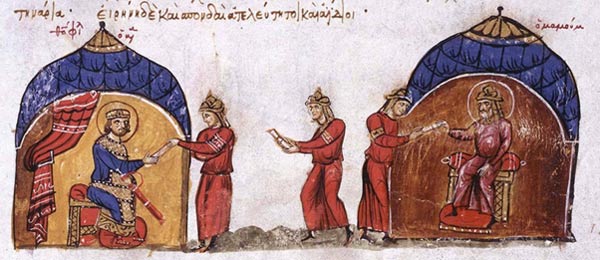
Caliph al-Mamun sends an envoy to Byzantine Emperor Theophilos (Wikimedia)
So, what Al Mamun and his team discovered in the Great Pyramid was truly amazing and completely planned for! Ancient legends by a number of Arab historians, such as the 9th century Arabic writer Ebn Abd Alhokim, tell us that amongst other treasures, the caliph discovered a stone statue and that inside was a man who wore a gold breastplate covered in gems. Lying by his side was a fabulously fine sword and shield. On the head of the man lay a huge ruby the size of a chicken egg which shone as the light of day! The statue in which the body was buried was covered in a mysterious writing that no one at that time could decipher. By the way, some have said that the Great Pyramid’s outer casing stone, now missing, was also covered in Greek or Coptic writing.
Egyptians were not usually buried in their armour so who was this great warrior? In the quest to uncover who this may have been, I explored many legends, documents, and medieval paintings. For me there was only one candidate because history said that Alexander the Great was buried in Egypt with his armour on. The only problem was that Alexander was said to have been buried in Memphis or Alexandria. However, reports also suggest he was moved and I believe that he has been buried at least three times.
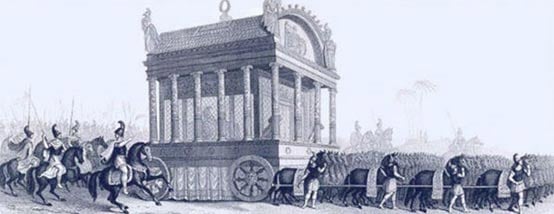
A 19th century depiction of Alexander’s funeral procession based on a description by Diodorus (macroevolution.net)
Unfortunately, ancient texts written by people who knew Alexander, or who gathered information from men who served with Alexander, had all been lost. However, there were a few original fragments and inscriptions left. One example of original text is The Parian Marble found at Paros. Amongst other information, it records red letter dates in the life of Alexander, including his burial at Memphis in 321/320 B.C.
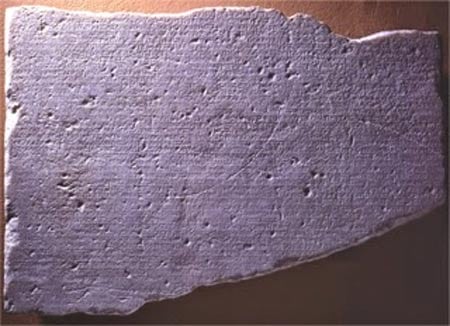
The middle section of the Parian Marble, now at the Ashmolean Museum, Oxford
Original accounts written by his contemporaries namely Ptolemy, Aristobulus, Nearchus, and Onesicritus have been lost but luckily for us, there are substantial later works based on the ancient writings that have survived. They include Diodorus Siculus, writing in the first century B.C., Quintus Curtius Rufus, mid-to-late 1st century A.D., Arrian 1st to 2nd century A.D., the biographer Plutarch 1st to 2nd century A.D., and Justin, dated to around the 4th century A.D.
In addition, there is the infamous ‘Alexander Romance’ allegedly compiled from a number of stories written by Callisthenes. To confuse the issue further, it is currently accepted that there are a number of authors to this work and the author Callisthenes is referred to as Pseudo-Callisthenes! It was during the first few centuries after Alexander’s death, when a quantity of the legendary material was gathered into this body of work. The text underwent, or so it is claimed, numerous expansions and revisions throughout antiquity and the middle ages. Some say that it contains dubious stories, however because of its popularity and that of its hero Alexander, the manuscript has been translated into many languages. These days, historians do not take this work seriously, but because it was taken seriously in the past, I did take it into account in my research.
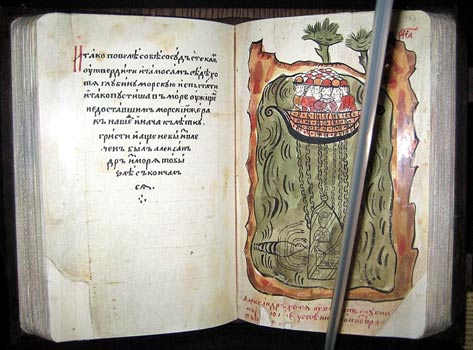
17th-century version of the ‘Alexander Romance’ (Wikipedia)
The most reliable ancient source on Alexander is considered to be Arrian. He took his stories from Ptolemy and Aristobulus and wrote ‘Anabasis Alexandri,’ Campaigns of Alexander, (The Greek term ‘anabasis’ referred to an expedition from a coastline into the interior of a country) and is probably the most important contribution to the knowledge of Alexander the Great that we can draw on. Ptolemy I had been a close friend of Alexander’s since childhood and had gone on to become a leading general. After Alexander’s death he became Pharaoh of Egypt. Some have criticized him for exaggerating Alexander’s attributes both on the battlefield and in his private life. He supposedly upped his eulogy of Alexander and his own close relationship with him in order to secure his place in Egyptian history and that of the ensuing Ptolemy Pharaohs.
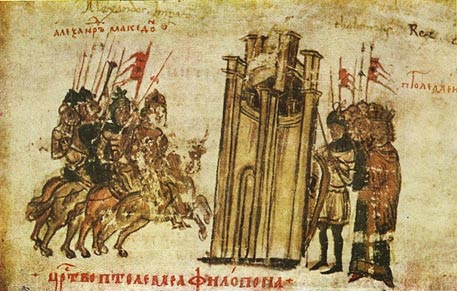
Alexander the Great and Ptolemy I Soter attacking. Miniature 13 from the Constantine Manasses Chronicle, 14th century (Wikimedia)
The idea that the ancient corpse supposedly found in the Great Pyramid by Caliph Al Ma’mun may have been Alexander the Great is intriguing.
Firstly, if what I have written did actually happen, (the reader must decide having seen the evidence), then Alexander’s final resting place could also be divulged. We would know not only where he was buried now but roughly what year and who buried him in his final resting place. In other words we should be able to trace his whereabouts today because it should lead on directly from the discovery of Al Ma’mun. Indeed, that is the culmination of the story in my book Alexander, A New Theory on an Ancient Legend’, although I did not set out to find it!
Secondly, I have investigated the whereabouts of that huge ruby that Al Ma’mun found lying on the head, (since ancient times a sign of royalty) and I believe the ruby still exists today.
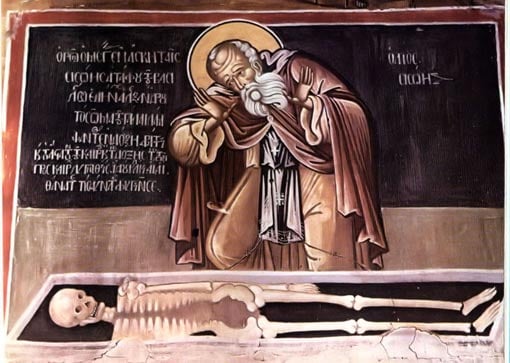
‘The Astonishment of Saint Sisoes’ shows the saint kneeling before the remains of Alexander the Great (orthodoxwiki)
By embracing the spirit, as well as the law of the letter, admiring the beautiful art as well as studying the context of the written word, I have tried to bring the past and its people into perspective, and I suppose, metaphorically back to life.
Two thousand years may have passed, but our understanding of Alexander’s passion for the glories of both life and death can still fire our imagination and inspire the soul. It can also inspire those of us interested in ancient origins to search out the truth no matter where it is hidden!
Further evidence regarding who may have placed Alexander in the Great Pyramid, the year they put him there, and most importantly, why they put him there, is available in Lucy Caxton’s book, ‘Alexander, A New Theory on an Ancient Legend’ or visit her website at www.lucycaxtonbrown.co.uk.
Featured image: Relief depicting Alexander the Great. Source: BigStockPhoto
– See more at: http://www.ancient-origins.net



















